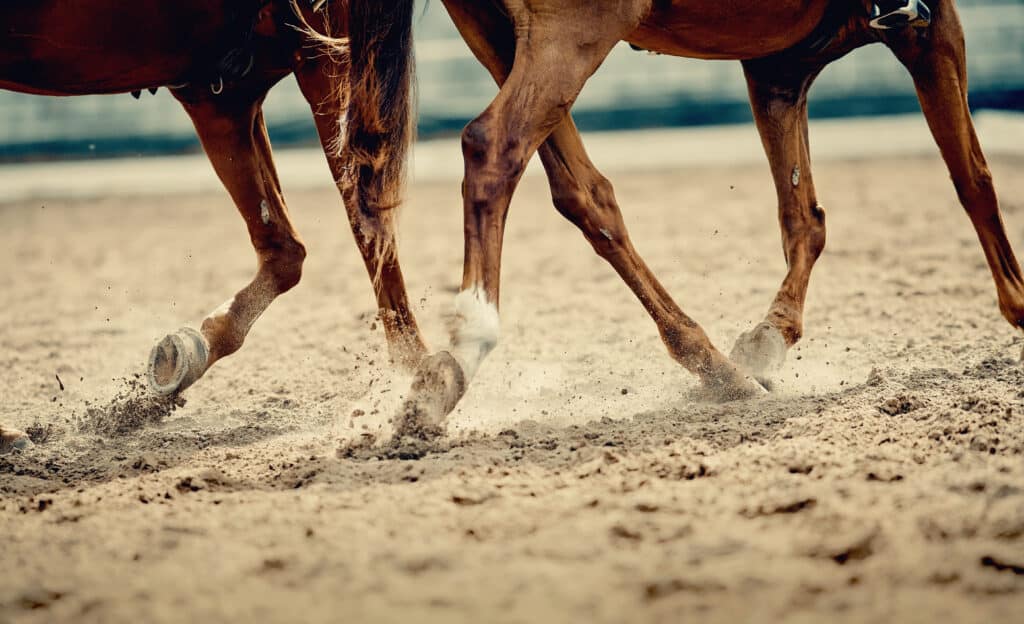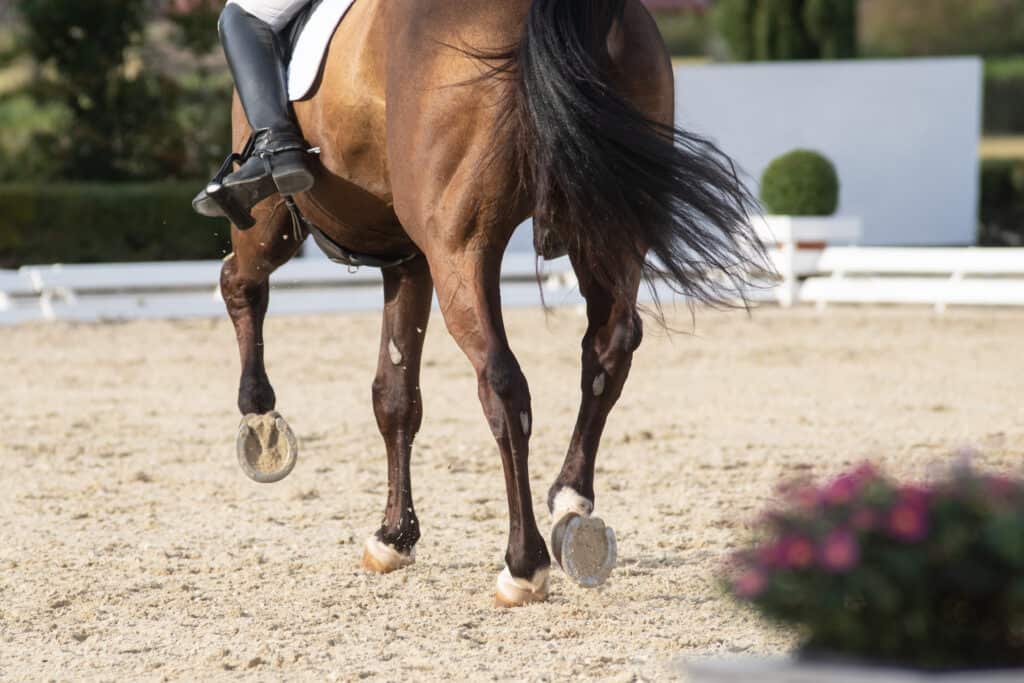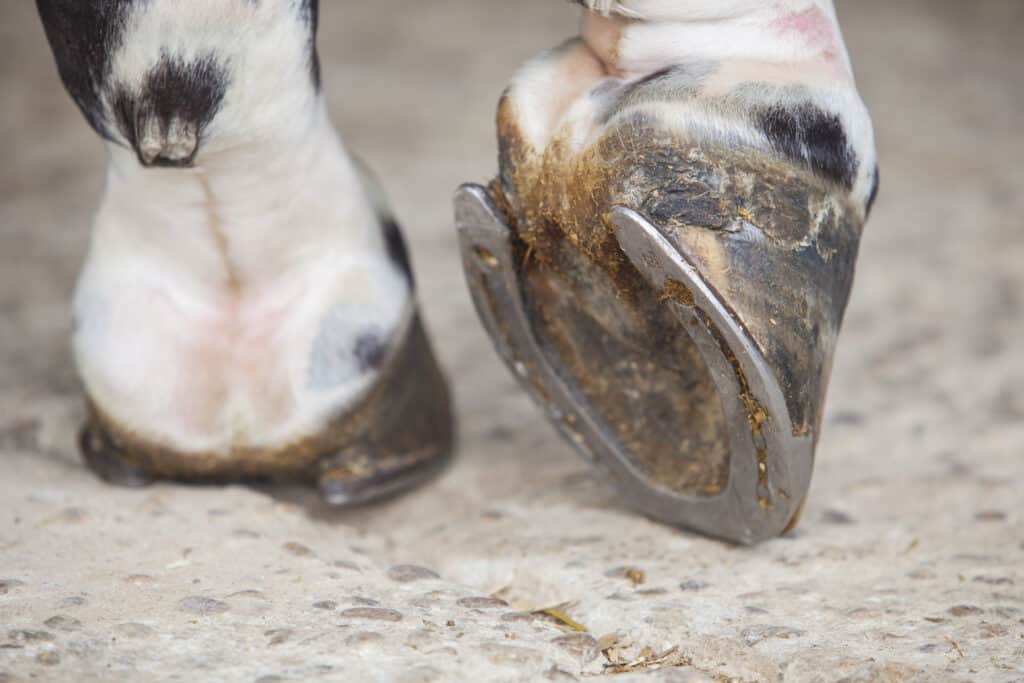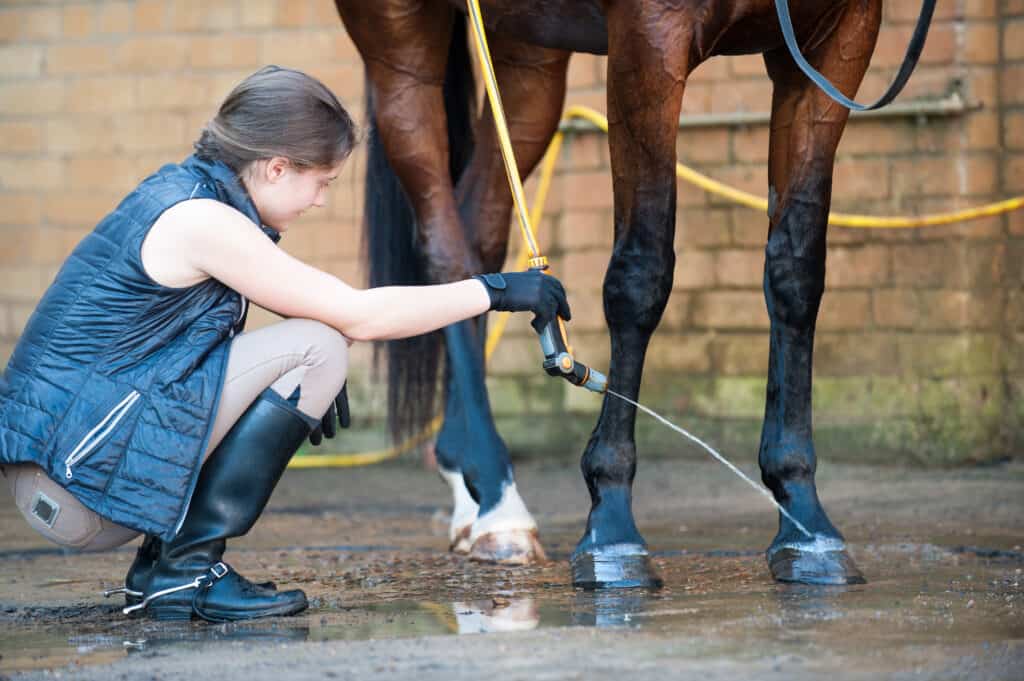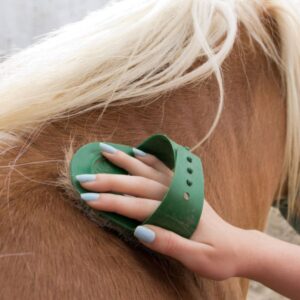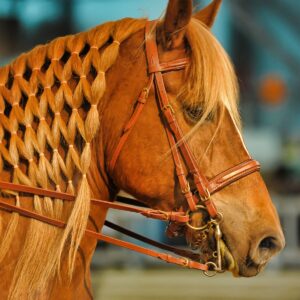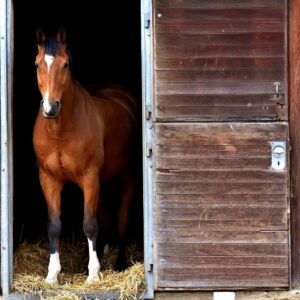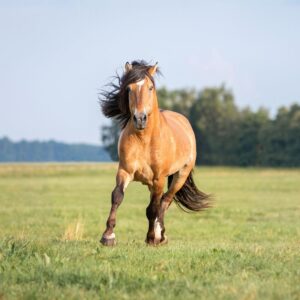Ever wonder what those callous areas found on your horse's legs are? The majority of horses have them on all four legs. The growth seen in the inside of the leg is called a chestnut. Not to be confused with the nuts roasted at Christmas. In addition, horses have a similar growth at the rear of the fetlock that is called the ergot. Read on to learn more about the chestnuts and ergots found on horses and how to take care of them.
The Chestnut: A Horse's "Fingerprint"
The size, shapes, and growth patterns of Chestnuts are so unique to each horse that they have been nicknamed a horse's fingerprint. They are typically the size of a large thumbnail. Some have jagged surfaces, while others stay smooth. Over time they can thicken and be peeled off.
Typically, they are found on all four legs. But this is not the case with all horses. They are located on the inside of the leg above the knee on the front legs. On the rear legs, they are located just below the hock.
The Ergot
The ergot is another callous type growth located on the backside of the fetlock. It is the size of and shaped similar to a pencil eraser. Don't confuse these with ergot alkaloids, which is a compound found in some fungi and can be toxic to horses. Ergots can vary in size from horse to horse. If there is long hair on the fetlock, the ergot can be hard to see.
Why Science Says Horses Have Chestnuts and Ergots
One theory science has of the origin of chestnuts and ergot came from, which some may argue or discredit, concerns the evolution of the horse. Florida Museum of Natural History has an extensive online exhibit of fossils dedicated to the evolution of the horse. These fossils show the evolutionary process of horses from prehistoric times to the present.
The Eohippus (Dawn Horse)
Resources at the Natural Museum of the Horse say that the first horse, called the Hyracotherium, or Eohippus (dawn horse), was 10 to 17 ¾ inches tall at the shoulder. Their front legs had four toes, and the hind legs had three toes. Fossils of the dawn horse have been found in the Wasatch Range in Utah, the Wind River Basin in Wyoming, and Europe. Earlier ancestors of the horse are thought to have five toes.
Adapting Over Time
Over time equines learned to adapt to their environments. The legs and feet became longer and more streamlined, allowing the horse to have more speed to avoid predators. The results of this were the center digit became the main weight barer, while the other digits lost useful function.
What Happened to the Extra Toes?
The current scientific theory is that the second and fourth toes evolved into the splint bones. These are small bones found along the outer sides of the cannon bone. The chestnut and ergot are thought to be the only vestigial remains of the first and fifth toes.
Some argue that the chestnut is actually the vestigial remains of a scent gland. Vestigial https://www.merriam-webster.com/dictionary/vestigial is relating to, or being the last remaining amount or visible sign of something lost or vanished.
What Breeds Have Chestnuts and Ergots?
Chestnuts and ergots can be found on all equine breeds. The only exception is their cousins, zebras, and asses.
Caring for Chestnuts and Ergots
Chestnuts and ergots are very normal growths and are not dangerous to you or your horse. If you are competing in some equine breed competitions, it shows good horsemanship and grooming to keep them trimmed. This can be accomplished in several ways.
A farrier can use the same knife used on the hoof to trim the chestnuts easily. He might need to use his clippers to trim the ergot if it is large and hard.
Horse Courses by Elaine Heney
- Listening to the Horse - The Documentary by Elaine Heney & Grey Pony Films
- Shoulder In & Out Training for better balance, bend & topline development with your horse
- Over 110+ Polework Exercises & Challenges to Download
- Dancing at Liberty & Creating Connection with Your Horse (11 lessons) - Grey Pony Films
If you want to trim them yourself, that is doable. It is easier if you soak the area with water first to soften them up. The chestnut can often be peeled away by hand. The ergot can sometimes be peeled away, but more often, you might need a pocket knife. Be careful not to trim them to close. The chestnuts serve as a protective covering for skin below them.
Final Thoughts
Chestnuts and ergots are typical growths on all breeds of horses. They may not be found on every leg, though. Science has a strong opinion as to their origin. Caring for chestnuts and ergots is easy but not necessary unless they grow exceptionally large. However, some breed associations like them trimmed for competitions.

